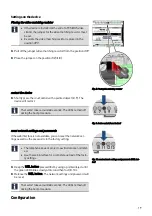
22
IP addresses and DHCP server
static and dynamic IP addresses and DHCP service:
Each device within an IP network needs its own IP address. In simple systems, all devices are located
within a local IP address range and within the same subnet. Thus, all devices can communicate with
each other without routing. Within home networks the scheme is as follows:
192.168 . xxx . xxx
subnet mask
The subnet mask divides the IP address into a network part (including the subnet) and into a host part
(individual number of a device within the subnet). For the scheme mentioned above the subnet mask is
always 255.255.255.0.
Why using static or dynamic IP addresses?
Usually a fixed IP address is assigned manually to a device that is providing a service within the network
(server). Devices that are only requesting service (clients), thus can be reached under this IP address. For
the clients it is recommended to use the automatic assignment of IP addresses per DHCP service. The
DHCP service manages a pool of IP addresses for dynamic allocation. Within home networks such a ser-
vice is available by default. Instead of its activation there is no further configuration necessary at the de-
vice. For service devices (e.g. FBI6119-0400) a manual management is necessary. Example: To receive
the video image, the smartphone needs to know under which IP address the front-door station can be
reached. The smartphone can have a dynamic IP address, because the device itself provides no service.
number of the subnet
defines the allocation to a subnet, must
be the same for all devices within one
subnet
individual number of the device in the
subnet
each device needs its own number for identifi-
cation This number must not be assigned
twice within one subnet.
Prefix for local IP address-
es according to class C of
the convention RFC 1918
















































